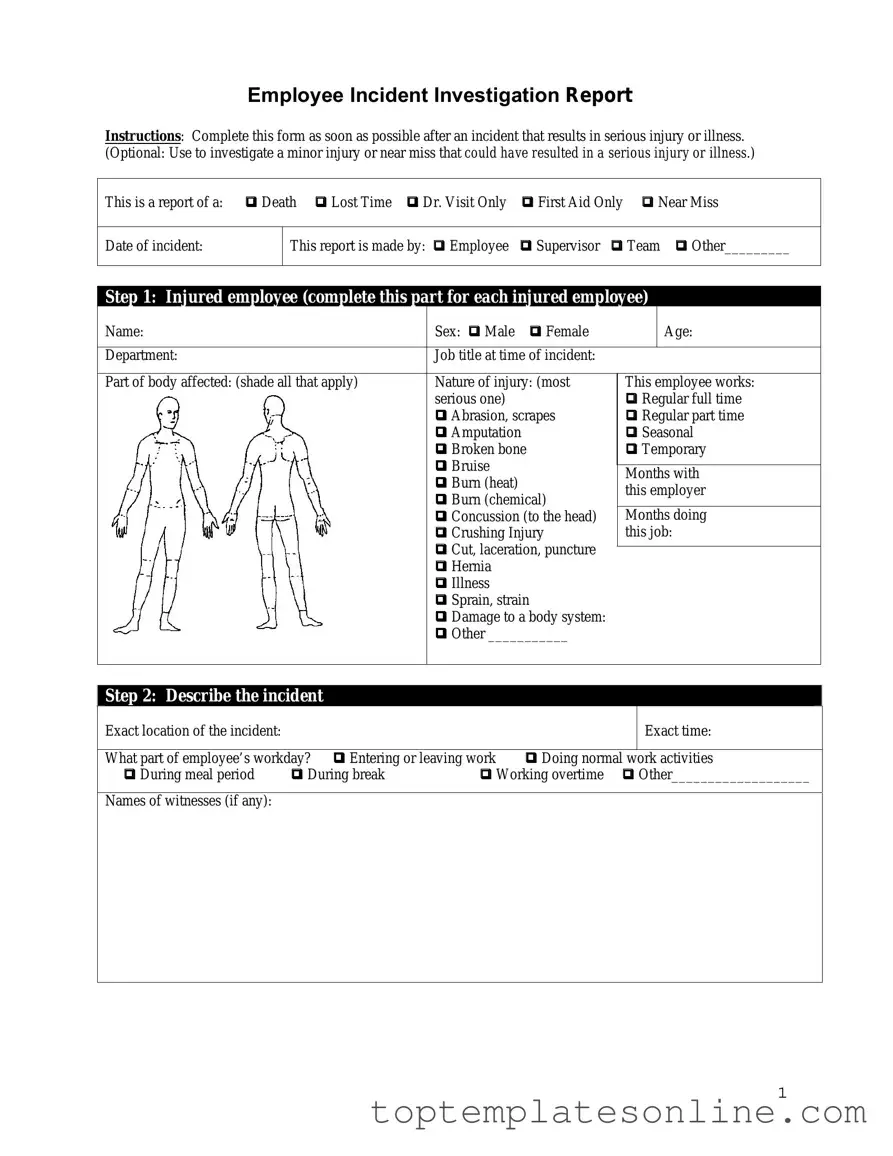When an employee is involved in an accident at work, the subsequent documentation is crucial for both the individual and the organization. The Employee Accident Report form serves as a formal record of the incident, capturing essential details such as the date, time, and location of the accident, as well as a comprehensive description of what transpired. This form typically requires information about the individuals involved, including witnesses, and may also include sections for medical attention received, if applicable. Employers often use this report to investigate the incident further, ensuring compliance with safety regulations and identifying areas for improvement in workplace safety protocols. By meticulously documenting the events surrounding an accident, the form not only aids in the processing of workers' compensation claims but also plays a vital role in preventing future incidents. Understanding the significance of this form and its components can empower both employees and employers to foster a safer working environment.
